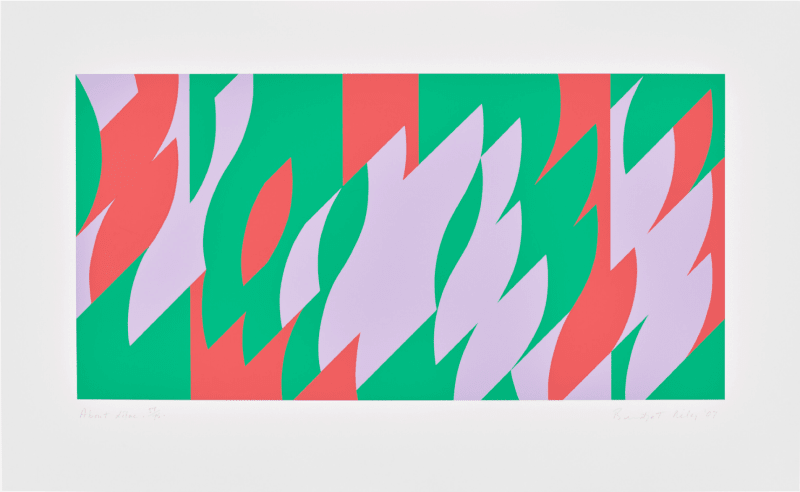"Waves will never be the same again each and every time they’re different, every single wave, every single ripple, every single breaking of a wave on a shore or rock all are unique and have never happened before and will never happen again”.
Bridget Riley is one of the most important and significant British artists of the 20th Century and one of the leading figures of the Op Art movement. Known for her vibrant, eye-catching works that seem to move and shimmer before your eyes. Her work explores the relationship between colour, shape and perception that challenges the viewer’s sensations.
Bridget Riley was born in Norwood, South London. Living through WWII shaped her views on gender: she recalled a strong sense of equality during that time and a desire to make the most of the peace that followed. Both her mother and aunt had studied at Goldsmiths College before her and they encouraged her to pursue art seriously.
In 1949, Riley began studying at Goldsmiths. She was intensely focused on drawing but did not complete the full course. In 1952, she moved on to the Royal College of Art (RCA). A 1958 exhibition of Jackson Pollock at Whitechapel Gallery had a lasting effect on Riley, fuelling her interest in the expressive and optical potential of abstract art. By the end of 1960, following the emotional upheaval of a break up with her boyfriend and her father’s serious accident, she had produced her first non figurative painting; an abstract, monochromatic work. In 1968, she represented Britain at the Venice Biennale and became the first woman to win the International Prize for Painting.
Today, Bridget Riley works from her studios in Cornwall, London and France. Her work continues to be shaped by place, colour and natural light. She only paints by daylight and still returns often to motifs developed over decades; stripes, curves, waves and colour interactions, however now explores them on ever larger scales. Her art is rooted in science and theories on visual perception - how we see, how the viewer sees. It challenges the way we see the world and her process is meticulous, with every line and colour carefully planned to produce a specific effect.
Her works are held in major public collections internationally including the Tate Gallery in London and the Museum of Modern Art in New York.
